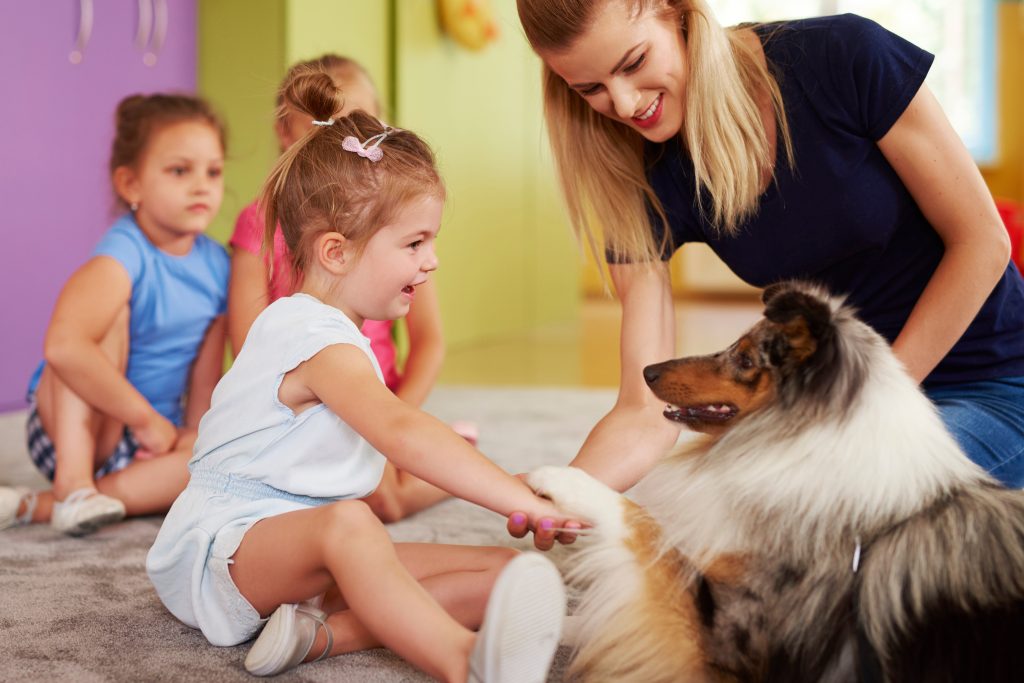The influence of the environment on pet anxiety

Understanding Pet Anxiety in Relation to the Environment
The surroundings in which pets live play a crucial role in their emotional well-being. Numerous factors contribute to pet anxiety, and recognizing them can help create a more harmonious home environment. One key element to consider is the auditory landscape surrounding pets. Whether it’s the bustling noises of a busy street, the unpredictable sounds of fireworks, or the calming effects of nature, these elements can greatly impact a pet’s mental state.
The Effects of Sound on Pet Anxiety
Pets, especially dogs and cats, possess acute hearing capabilities. Sudden and loud noises, such as thunderstorms or sirens from emergency vehicles, can evoke intense fear responses, leading to anxiety. For example, during the Fourth of July, many pets become distressed due to the sound of fireworks. Owners may notice their dogs attempting to hide under furniture or excessively panting, indicative of stress. To help alleviate this issue, pet owners can create a safe space for their pets, equipped with blankets and toys, and play soft music to muffle the frightening sounds from outside.
The Role of Space in Anxiety Levels
The physical space that pets inhabit also plays a significant role in their emotional stability. Dogs raised in quiet, open areas may struggle significantly when introduced to crowded, cramped environments. For instance, a dog accustomed to a spacious backyard may experience anxiety if confined in a small apartment, especially if it lacks routine outdoor activities. Pet owners should consider providing ample space for their pets to roam and explore, as well as designated cozy spots where they feel secure.
Impact of Social Interactions
Another factor influencing pet anxiety is the nature of social interactions. Frequent visits from family and friends, while often welcomed, can be overwhelming for some pets. Cats, in particular, are sensitive to changes in their social environment. To mitigate stress, it’s advisable to establish a consistent routine regarding social visits, allowing pets to gradually acclimate to new people. Offering them a separate space can provide a retreat when feeling overstimulated.
Routine and Its Importance
Pets thrive on routine. Sudden changes in daily schedules, such as altered feeding times or unexpected absences from owners, can lead to feelings of insecurity and anxiety. For example, if a pet’s owner travels frequently for work, the animal may develop separation anxiety. To counteract this, consistency is key; maintaining regular activity and grooming sessions can instill a sense of stability in your pet’s life.

For pet owners, it’s essential to evaluate how these environmental influences manifest in their furry companions. Observing and understanding the signs of anxiety—like excessive barking, destructive behavior, or withdrawal—can lead to effective measures to improve your pet’s situation. Consulting a veterinarian or a pet behaviorist can also provide tailored strategies for managing anxiety based on individual pet needs.
By exploring these factors, owners can unlock surprising insights into how pets perceive their surroundings. Addressing environmental stressors can significantly reduce anxiety levels, fostering a more relaxed and enjoyable atmosphere for pets. Delving deeper into this subject equips owners with valuable strategies to enhance the lives of their beloved companions, thereby strengthening the bond between them and ensuring their pets feel truly at home.
DISCOVER MORE: Click here to learn about the impact of early socialization
The Soundscape of Anxiety
As highlighted earlier, sound is one of the most pervasive influences on pet anxiety. The everyday sounds of a household, from the ringing of the doorbell to the clinking of dishes, can provoke varying responses in pets. Some sounds may even become triggers for stress or anxiety. Understanding which sounds induce anxiety in our pets can lead to implementing measures to reduce their impact.
Common Sound Triggers for Pets
Each pet is unique, and their responses depend greatly on their past experiences and individual temperaments. Below are some common sound triggers that often contribute to heightened anxiety levels:
- Thunderstorms: Many dogs and cats are particularly sensitive to thunder. The unpredictable nature of storms can create a sense of panic, causing them to seek shelter.
- Fireworks: As mentioned, loud celebrations can send pets into a tailspin of anxiety. The high-decibel pops and bangs often reverberate throughout neighborhoods, heightening stress for our furry companions.
- Vacuum Cleaners: The loud noise and sudden appearances of vacuum cleaners can instill fear in many pets, making them want to flee from the perceived threat.
- Sirens and Alarms: Emergency vehicle sirens can be startling and confusing for pets, contributing to feelings of distress.
To mitigate the impact of these environmental sounds, pet owners can experiment with various strategies. For instance, creating a soundproof zone in the home or using white noise machines can help mask disturbing sounds. Additionally, playing calming music designed specifically for pets may provide a soothing backdrop that counteracts anxiety-inducing noises.
Environmental Changes and Their Psychological Effects
Beyond sounds, the general environment in which pets live also deeply influences their emotional health. Environmental changes—be it a new home, changes in decor, or even a new family member—can challenge a pet’s sense of security. These shifts can lead to increased anxiety as pets are left trying to make sense of their new surroundings.
The Psychological Effects of Moving
Moving to a new house or apartment is one of the most significant changes a pet can experience. This transition might unsettle their well-established routines, provoke confusion, and intensify feelings of anxiety. Pets thrive on familiarity, and an immediate upheaval can lead to distress. Dogs, particularly, may exhibit behaviors such as excessive barking, pacing, or acting withdrawn. To ease this transition, owners should give their pets time to adjust and provide familiar items—like their bed or toys—as anchors in the new space.
Understanding the influences of both sound and physical environment on pet anxiety is essential for creating a supportive atmosphere where pets can thrive. By paying attention to their reactions and adjusting their surroundings accordingly, pet owners can play a vital role in fostering their pets’ emotional well-being, ultimately enhancing the quality of life for their beloved companions.
| Environmental Factors | Impact on Pet Anxiety |
|---|---|
| Noise Levels | High noise levels can create significant stress for pets, leading to increased anxiety. Common sources include traffic, construction, and loud household appliances. |
| Home Environment | A cluttered or chaotic environment can overwhelm pets, fostering anxiety and leading to behavioral issues. It is essential to create a serene and organized space. |
| Socialization | Lack of social interaction can exacerbate anxiety in pets, as they thrive on companionship, both with humans and other animals. |
| Visual Stimuli | Excessive movement or unpredictable changes in the environment can heighten a pet’s alertness and lead to anxiety. Controlled exposure to various stimuli is crucial. |
The intricate relationship between a pet’s environment and their anxiety levels is profound. High noise levels, commonly found in urban settings, can particularly affect sensitive animals. For instance, dogs may react fearfully to the sound of sirens, while cats often retreat to hiding spots. Similarly, a chaotic home environment can overwhelm pets, impacting their behavior. Ensuring a tranquil space can foster security. Furthermore, pets require appropriate socialization; isolation can lead to increased stress. Lastly, being mindful of visual stimuli is essential, as sudden movements or unfamiliar surroundings can trigger anxiety responses. Understanding these factors can lead to more informed strategies for improving pet well-being.
DISCOVER MORE: Click here to learn about a balanced diet for your pet
Space and Social Dynamics
The spatial configuration of a pet’s environment and the social dynamics within the household also contribute significantly to their anxiety levels. How space is organized and how social interactions unfold can impact a pet’s sense of safety and overall emotional well-being. Understanding these factors is crucial for addressing and alleviating anxiety in pets.
The Impact of Living Space
For many pets, especially dogs, having a safe and designated space within the home provides emotional security. In a chaotic environment, the lack of such areas can heighten anxiety. For instance, apartments with limited space may become overwhelming for larger breeds or pets who prefer to roam. In contrast, homes with backyards offer ample opportunities for exploration and physical activity, which inherently reduces stress levels.
Creating a calm zone—a specific area in the house where pets can retreat during stressful situations—can significantly bolster their sense of security. This can be achieved by incorporating familiar bedding, toys, and even the scent of the owner. Ensuring this cozy space is away from high-traffic areas where the everyday hustle could contribute to anxiety is essential.
Household Dynamics and Their Effects
The behavior of household members can also play a pivotal role in pet anxiety. Pets are highly attuned to human emotions and can easily pick up on stress, tension, or conflict among their owners. This heightened sensitivity means that changes in family dynamics—such as the arrival of a new baby, a divorce, or the introduction of a new pet—can unsettle them.
For example, a study published in the Journal of the American Veterinary Medical Association suggests that pets may display signs of anxiety when there are significant emotional fluctuations in their human companions. Signs include excessive whining, hiding, or destructive behavior. Moreover, pets in multi-pet households can be particularly vulnerable if fights or dominance issues arise, leading to anxiety due to perceived threats.
To alleviate anxiety stemming from social dynamics, fostering a routine that includes consistent training, socialization, and bonding can prove beneficial. Incorporating positive reinforcement during interactions among household members and pets helps to establish trust and reduces the likelihood of anxious behavior.
Nature and Outdoor Experiences
Finally, the environment beyond the home also has a tremendous impact on pet anxiety. Regular exposure to various outdoor stimuli can either calm or provoke feelings of anxiety in pets. For instance, parks filled with new scents and friendly animals can create enriching experiences that stimulate curiosity and confidence.
However, noisy streets or chaotic environments like bustling cities can create an overwhelming experience for sensitive pets. Providing frequent but balanced exposure to outdoor experiences in tranquil settings is vital. Gradually introducing pets to busy environments while also allowing for quiet exploration can help them develop resilience to external triggers.
Engaging in routine outdoor activities, such as walks in the local park or nature trails, not only supports physical well-being but plays a crucial role in minimizing anxiety, offering a sense of adventure while simultaneously building trust and reinforcing positive associations with the outside world.
The multifaceted relationship between the environment and pet anxiety underscores the importance of being mindful of both the internal household dynamics and external stimuli. By creating a supportive and enriching environment, pet owners can significantly enhance their furry friends’ emotional stability and overall happiness.
DIVE DEEPER: Click here to learn more
Concluding Thoughts on Pet Anxiety and Environmental Influences
Understanding the influence of the environment on pet anxiety reveals a complex interplay between physical spaces, social dynamics, and external stimuli. As outlined, a pet’s emotional health is significantly shaped by their living conditions. Creating special spaces that serve as safe havens allows pets to seek comfort in times of stress, fostering a sense of security. Furthermore, being mindful of household interactions proves essential, as pets are incredibly perceptive and sensitive to human emotions and familial changes.
The importance of outdoor experiences cannot be overstated. Regular exposure to varied environments can aid in developing a pet’s resilience, with tranquil nature walks often serving as a perfect antidote to anxiety. Engaging pets in regular outdoor activities encourages not only physical health but also promotes emotional well-being and trust in their surroundings.
As pet owners, being proactive in addressing and optimizing these environmental factors can truly make a difference. Simple strategies like establishing a calm zone at home, offering social stability, and balancing outdoor exposure can significantly alleviate anxiety. By cultivating a harmonious living environment for pets, owners not only enhance their furry friends’ mental stability but also strengthen their bond and overall happiness.
For those looking to delve deeper into strategies to combat pet anxiety, resources such as local animal behaviorists, veterinarians, and pet psychology literature provide valuable insights. The journey to understanding how the environment shapes pet anxiety is just beginning, and every step taken towards creating a healthier space for our pets is a step towards a happier life for both pets and owners alike.



